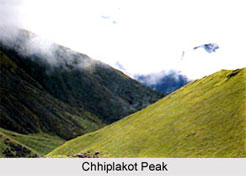 Chhiplakot is a high peak in the Himalayas located in the Uttarakhand state of India. Chipplakot is also referred to as `Najurkot`. The area near the peak is full of alpine flora and vegetation. Trekking, skiing and a tri-annual fair are the other attractions of this peak. Every year, it draws people from various parts of the world.
Chhiplakot is a high peak in the Himalayas located in the Uttarakhand state of India. Chipplakot is also referred to as `Najurkot`. The area near the peak is full of alpine flora and vegetation. Trekking, skiing and a tri-annual fair are the other attractions of this peak. Every year, it draws people from various parts of the world.
Location of Chhiplakot Peak
The peak is located in the Pithoragarh district of Uttarakhand. The peak is situated at an altitude of 3290 metres above mean sea level.
Attractions of Chhiplakot Peak
Chipplakot is well known for its lush green alpine meadow called Bugyal. The peak offers exciting trekking opportunities and is a paradise for nature lovers. The slopes of Chipplakot are ideal for skiing. It also has temples around it that are worth visiting. There is a cave at Chhiplakot where a winter fair is organized after every three years.
Connectivity of Chhiplakot Peak
It is well connected via rail, air and road. The city of Uttarakhand comprises of major railway stations like Dehradun, Kathgodam, Kotdwara, Pantnagar and Roorkee. The closest airport is Jolly Grant Airport near Dehradun. Uttarakhand is also well connected to almost all the important places in the state via bus services.
This article is a stub. You can enrich by adding more information to it. Send your Write Up to content@indianetzone.com



















